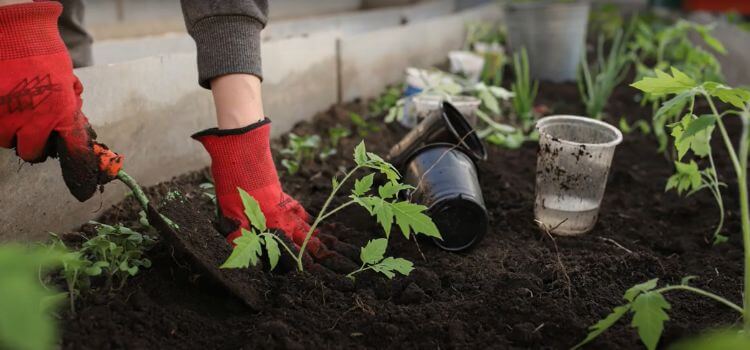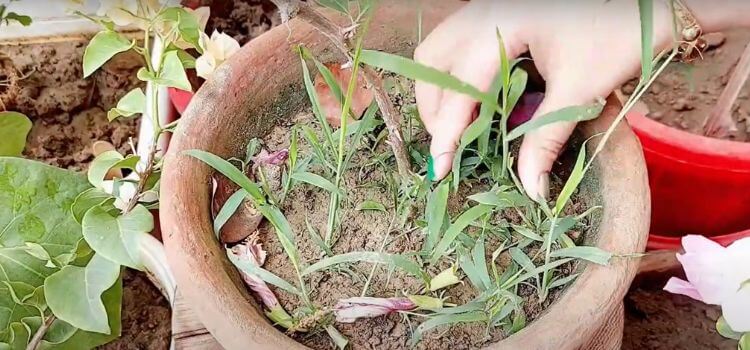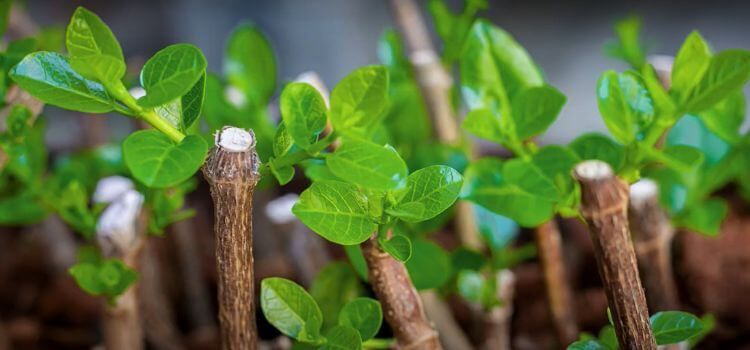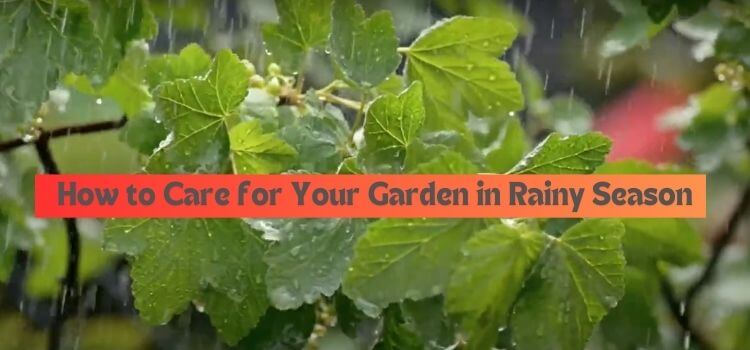As an Amazon Associate, I earn from qualifying purchases.
Ensure proper drainage and remove excess water regularly. Prune plants to prevent fungal growth and promote airflow.
Gardening during the rainy season presents unique challenges and opportunities. Rainwater can nourish your garden, but excessive moisture can harm plants. Proper care and maintenance are essential to ensure your garden thrives. Focus on drainage to prevent waterlogging, which can damage roots.
Check for pests regularly, as they can proliferate in damp conditions. Pruning and trimming help improve air circulation, reducing fungal infections. Mulch conserves moisture while keeping soil structure intact. Choose rain-tolerant plants for better resilience. Following these steps can maintain a healthy, vibrant garden even during the wettest months.

Preparing Your Garden
The rainy season can be both a blessing and a challenge for your garden. Excess water can damage plants, but proper preparation can help them thrive. Learning to care for your garden during this time ensures that your plants stay healthy and beautiful. Here are some tips to help you get started.
Soil Drainage Tips
Good soil drainage is crucial during the rainy season. Waterlogged soil can harm plants. Follow these tips to improve drainage:
- Check for water puddles in your garden. These indicate poor drainage.
- Add organic matter like compost to your soil. This improves its structure.
- Use raised beds to help excess water drain away from plant roots.
- Install drainage pipes if necessary. These can help direct water away.
Creating furrows or small channels in the garden can also help. These guide excess water away from plants. Aerate the soil by poking holes with a garden fork. This allows water move more freely.
Choosing The Right Plants For Rainy Season
Select plants that thrive in the rainy season. Some plants handle excess water better than others. Native plants are often a good choice as they are adapted to local conditions.
- Look for plants labeled as “water-tolerant” or “wet-tolerant.”
- Consider plants like ferns, hostas, and daylilies.
- Avoid plants that prefer dry conditions.
Group plants with similar water needs together. This ensures that all plants get the right amount of water. Use mulch to help retain moisture and prevent soil erosion. Monitor your plants regularly for signs of stress or disease.
Protecting Plants
The rainy season can be both a blessing and a challenge for gardeners. Protecting plants during heavy rains is crucial, as too much water can damage them. Follow these tips to keep your garden safe and healthy.
Using Covers And Mulch
Covers and mulch are essential tools in the rainy season. They help reduce waterlogging and soil erosion and protect delicate plants from heavy rain. Use plastic sheets or tarps. These materials keep the plants dry and safe. Mulch helps retain soil moisture and prevent weed growth. Organic mulch like straw, leaves, or compost is ideal.
- Plastic sheets: Protect plants from heavy rain.
- Straw mulch: Retains soil moisture and prevents weeds.
- Compost mulch: Enriches the soil and keeps it moist.
Mulch also helps keep the soil temperature stable and reduces the risk of soil compaction, ensuring that the roots can breathe easily. Regularly check the mulch layer to ensure it is thick enough. Add more mulch if needed.
Creating Windbreaks
Windbreaks are structures or plants that protect your garden from strong winds. They reduce the impact of wind on plants. Strong winds can damage plant structures and soil. They also dry out the soil quickly.
Planting hedges or shrubs around the garden can act as natural windbreaks. Choose dense and sturdy plants. Trees like pine and cedar are great options. They provide excellent wind protection. Artificial windbreaks can also be used. Use fences or screens made from wood or metal. These structures should be tall and solid.
It is important to position the windbreaks correctly. Place them on the side where the wind usually comes from. This will give your garden maximum protection. Regularly maintain the windbreaks. Trim the plants and check the structures for damage. This ensures that they remain effective.
Water Management
Gardening in the rainy season can be a challenge. Water management is crucial for healthy plants. Too much water can harm your garden. Proper techniques can help keep your plants happy.
Monitoring Soil Moisture
Monitoring soil moisture is very important. Plants need the right amount of water to grow well. Too much water can cause root rot, and too little water can dry out the plants. Use a moisture meter to check soil moisture. Stick the meter into the soil and read the level. This tool helps you know if your plants need water or not.

Another way to check soil moisture is to feel it. Dig a small hole with your finger. If the soil feels wet, it does not need more water. If it feels dry, your plants need water. Always check the soil before watering your garden. Over-watering can be just as harmful as under-watering.
- Use a moisture meter for accurate readings.
- Feel the soil with your fingers.
- Water only when the soil is dry.
- Check soil moisture regularly.
Consistent monitoring helps maintain the proper moisture level. This keeps your plants healthy and robust.
Using Rain Barrels
Using rain barrels is a great way to collect rainwater. Rain barrels save water and reduce your water bill. Place a barrel under your downspout to collect rainwater. Make sure the barrel has a lid to keep out debris and insects.
Rainwater is suitable for plants because it is free of chemicals. Use the collected rainwater to water your garden during dry spells. Install a spout or tap at the bottom of the barrel. This makes it easy to fill your watering can.
| Rain Barrel Benefits | Details |
|---|---|
| Water Conservation | Collects and stores rainwater for future use. |
| Cost Savings | Reduces your water bill by using collected rainwater. |
| Plant Health | Provides chemical-free water that is good for plants. |
Installing rain barrels is easy and beneficial. This method helps you make the most of rainy days, and your garden will thrive with this extra water source.
Pest Control
Caring for your garden in the rainy season can be challenging. Excess moisture often attracts pests that can damage plants. Proper pest control is essential during this period. Understanding common pests and using natural deterrents can protect your garden effectively.
Identifying Common Pests
During the rainy season, some pests are more common. Snails and slugs thrive in wet conditions and can harm plants. They often eat leaves, stems, and flowers. Look for them in the early morning or late evening. Aphids are tiny insects that suck the sap from plants. They can weaken plants and spread diseases. They are usually found on the underside of leaves.
Fungal infections can also be a problem due to high humidity. Fungi, like mildew and mold, can spread quickly. Mosquitoes breed in stagnant water and can be a nuisance. They do not harm plants but can make gardening unpleasant. Caterpillars and beetles are also common pests during the rainy season. They can chew through leaves and stems, causing significant damage.
| Pest | Signs | Action |
|---|---|---|
| Snails and Slugs | Holes in leaves | Handpick or use traps |
| Aphids | Sticky residue on leaves | Spray with soapy water |
| Fungal Infections | White or gray patches on plants | Use fungicide |
| Mosquitoes | Biting insects | Remove standing water |
| Caterpillars and Beetles | Chewed leaves | Handpick or use neem oil |
Natural Pest Deterrents
Using natural pest deterrents can help protect your garden. Neem oil is a natural pesticide that can repel many pests. Spray it on plants to keep insects away. Garlic spray is another effective method. Mix crushed garlic with water and spray it on plants. The pungent smell deters many insects.
Companion planting can also help. Planting marigolds near vegetables can repel pests. Basil can deter mosquitoes and flies. Mint can keep ants and aphids away. Handpicking pests is a simple and effective method. Inspect plants daily and remove any pests you find.
Barriers and traps can also be helpful. Copper tape around plant beds deters snails and slugs, and sticky traps catch flying insects like aphids and beetles. Maintaining good garden hygiene is crucial. Remove dead leaves and debris to reduce pests’ hiding places.
Using these natural methods can help keep your garden healthy. They are safe for the environment and effective against many common pests. Regular monitoring and prompt action can prevent significant infestations.
Fertilization Techniques
The rainy season brings much-needed water to your garden. Proper care is essential to ensure your plants thrive. Fertilization techniques play a crucial role. They help provide necessary nutrients to your plants. Let’s explore some effective methods and tips.
Organic Fertilizers
Organic fertilizers are an excellent choice for your garden. They are made from natural materials and help improve soil health. Here are some benefits of using organic fertilizers:
- Increase soil fertility
- Improve soil structure
- Promote healthy root growth
- Enhance water retention
Compost is one of the best organic fertilizers. It is rich in nutrients and easy to make at home. Manure is another excellent option. It provides essential nutrients and improves soil structure. Here is a simple comparison of common organic fertilizers:
| Type | Benefits |
|---|---|
| Compost | Rich in nutrients, easy to make |
| Manure | Improves soil structure, provides essential nutrients |
| Bone Meal | High in phosphorus, supports root growth |
| Fish Emulsion | High in nitrogen, boosts plant growth |
Use organic fertilizers to nourish your garden and promote healthy plant growth.
Timing Your Applications
Timing is crucial when applying fertilizers in the rainy season. Applying fertilizers correctly ensures your plants get the nutrients they need. Here are some tips:
- Apply fertilizers before a rainstorm. This helps nutrients penetrate the soil.
- Avoid fertilizing during heavy rains. Nutrients may wash away with excess water.
- Use slow-release fertilizers. They provide nutrients gradually, ensuring steady growth.
Check your garden’s soil moisture levels before applying fertilizers. Too much water can lead to nutrient leaching. Inspect your plants regularly. Look for signs of nutrient deficiencies, such as yellow leaves or stunted growth.
Here is a simple guide to help you time your fertilizer applications:
| Condition | Action |
|---|---|
| Before Rain | Apply fertilizers |
| During Heavy Rain | Avoid fertilizing |
| After Light Rain | Check soil moisture |
Weed Control
The rainy season brings a fresh look to gardens. Plants thrive with the extra water. But, it also brings weeds. Weeds can take over your garden quickly. Controlling weeds is essential to keep your garden healthy. Learn how to manage weeds effectively during the rainy season.

Preventing Weed Growth
Preventing weed growth is important to keeping weeds at bay. Mulching is an excellent method. Mulch blocks sunlight from reaching weed seeds, stopping them from germinating. Organic mulches like straw or wood chips work best.
Cover crops are also helpful. These plants grow quickly and cover the soil, preventing weeds from getting a foothold. Good cover crops for the rainy season include clover and rye.
Weed barriers can also help. Lay landscape fabric over the soil. Cut holes for your plants. This keeps weeds out while letting water in. Make sure to secure the edges well.
Here are some tips for preventing weed growth:
- Water wisely: Water your garden plants, not the weeds.
- Space your plants: Close planting can shade the soil, reducing weed growth.
- Keep soil healthy: Healthy soil supports vigorous plants that can outcompete weeds.
Manual Weeding Methods
Manual weeding is a hands-on way to control weeds. Hand pulling is effective, especially after rain. The soil is soft, making pulling weeds out by the roots easier. Make sure to get the entire root system to prevent regrowth.
Hoeing is another helpful method. Use a hoe to chop off weeds at the soil surface. This is best done when the soil is dry. Sharp hoes make the job easier and more effective.
Weeding tools can make the job easier. Here of some helpful tools:
- Hand trowel: Great for digging out deep-rooted weeds.
- Weeding fork: Ideal for loosening the soil around weeds.
- Weed puller: Designed to grip and pull out weeds by the root.
Manual weeding may seem time-consuming, but it is effective. It also allows you to inspect your plants closely, helping you spot problems early. Regular weeding keeps your garden looking neat and healthy.
Garden Maintenance
The rainy season brings much-needed water to your garden. But it also brings challenges. Proper garden maintenance during this time is crucial. Rainwater can promote growth, but it can also cause problems. Taking care of your garden helps it thrive despite the rain. This guide covers essential tips for garden maintenance in the rainy season.
Pruning And Trimming
Pruning and trimming are vital during the rainy season. Wet conditions can cause plants to proliferate. Overgrown plants can block sunlight and air circulation, leading to disease and pest problems. Regular pruning helps maintain plant health.
- Check your plants regularly for overgrown branches.
- Use clean, sharp tools for pruning.
- Trim back any dead or diseased parts of the plant.
- Focus on shaping the plant to allow better air circulation.
After pruning, natural fungicides are applied to the cut areas. This prevents infections. Heavy rains can cause branches to break. Remove any broken branches immediately. This prevents further damage and disease spread. Regular trimming keeps your garden looking neat and healthy.
Cleaning Debris
Cleaning debris is another crucial task. Fallen leaves, twigs, and other debris can accumulate quickly, creating a breeding ground for pests and diseases. Regularly clearing debris helps prevent these problems.
- Rake leaves and remove them from garden beds.
- Dispose of twigs and fallen branches.
- Check drainage systems for blockages.
- Compost organic debris to recycle nutrients back into the soil.
Standing water can lead to root rot and other issues. Ensure your garden has proper drainage. Clean gutters and downspouts to direct water away from your plants. Regular debris cleaning helps maintain a healthy garden environment.
Post-rain Care
Taking care of your garden during the rainy season can be challenging. Post-rain care is crucial to keeping plants healthy and soil stable. Too much rain can cause problems like root rot and soil erosion. Proper care after rain helps plants stay strong and grow well. Let’s explore how to assess plant health and reinforce soil structure after heavy rain.
Assessing Plant Health
After heavy rain, plants may face various issues. Check the leaves and stems for signs of damage. Look for yellow or wilting leaves, which can indicate overwatering or disease. Scrutinize the roots. Healthy roots are white and firm, while unhealthy roots may be brown or mushy.
- Yellow leaves – Possible overwatering or nutrient deficiency.
- Wilting leaves – This could be a sign of root rot.
- Brown roots – Indicates root rot or poor drainage.
Remove any damaged leaves or stems to prevent disease spread. Trim the plants if necessary to improve airflow. Check the soil around the plants to ensure proper drainage. If the soil is too wet, add mulch or organic matter to improve drainage.
Reinforcing Soil Structure
Heavy rain can weaken soil structure. Strengthen the soil to support plant health. Add organic matter like compost or manure to the soil. This improves soil texture and enhances water retention. Mulch around plants to reduce soil erosion and retain moisture. Mulch also helps keep weeds at bay.
| Action | Benefit |
|---|---|
| Add compost | Improves soil texture and nutrient content |
| Use mulch | Reduces erosion and retains moisture |
| Check drainage | Prevents water logging and root rot |
Check for soil compaction after heavy rain. Compacted soil can prevent roots from growing properly. Aerate the soil by using a garden fork or aerator. This allows air, water, and nutrients to reach the roots.
Following these steps ensures your garden remains healthy and vibrant even during the rainy season.

Frequently Asked Questions
How Do I Protect My Garden From Heavy Rain?
To protect your garden from heavy rain:
- Use mulch to prevent soil erosion.
- Ensure proper drainage and consider raised beds.
- Cover delicate plants with protective sheets.
What Plants Thrive In Rainy Season?
Plants like ferns, hostas, and hydrangeas thrive in rainy seasons. They love moisture and can handle excess water. Choose rain-loving plants.
How To Prevent Waterlogging In My Garden?
Improve soil drainage to prevent waterlogging. Use organic matter like compost. Ensure garden beds are elevated. Regularly check and clear drainage paths.
Should I Fertilize My Garden During Rainy Season?
Yes, but use slow-release fertilizers. Rain can wash away nutrients. Apply fertilizer sparingly to avoid over-fertilization. Monitor plant health regularly.
Conclusion
Caring for your garden during the rainy season ensures healthy and vibrant plants. Use proper drainage, prune regularly, and monitor for pests. These simple steps will help maintain your garden’s beauty. With a bit of attention, your garden can thrive even in the wettest months.
Happy gardening!

